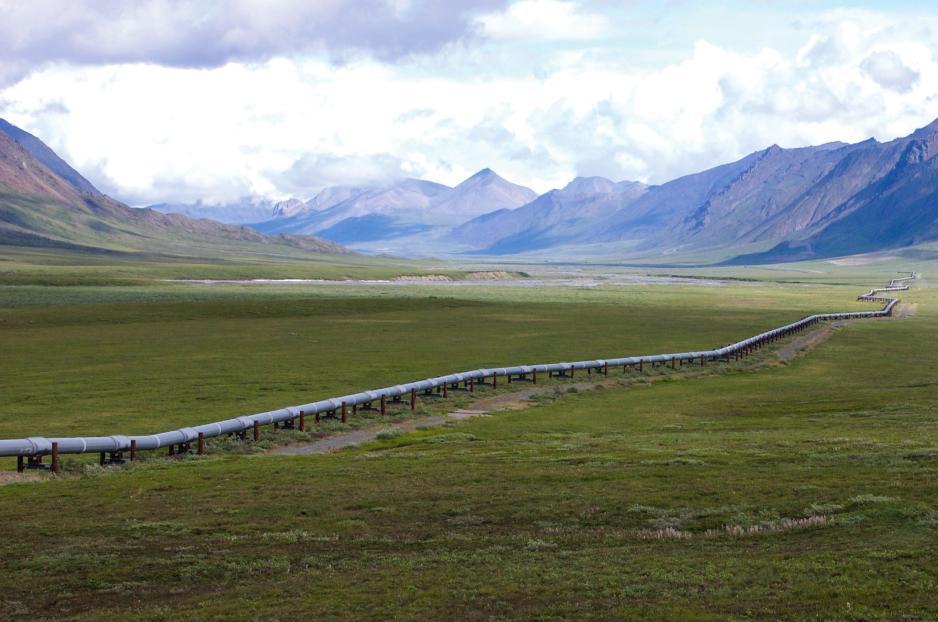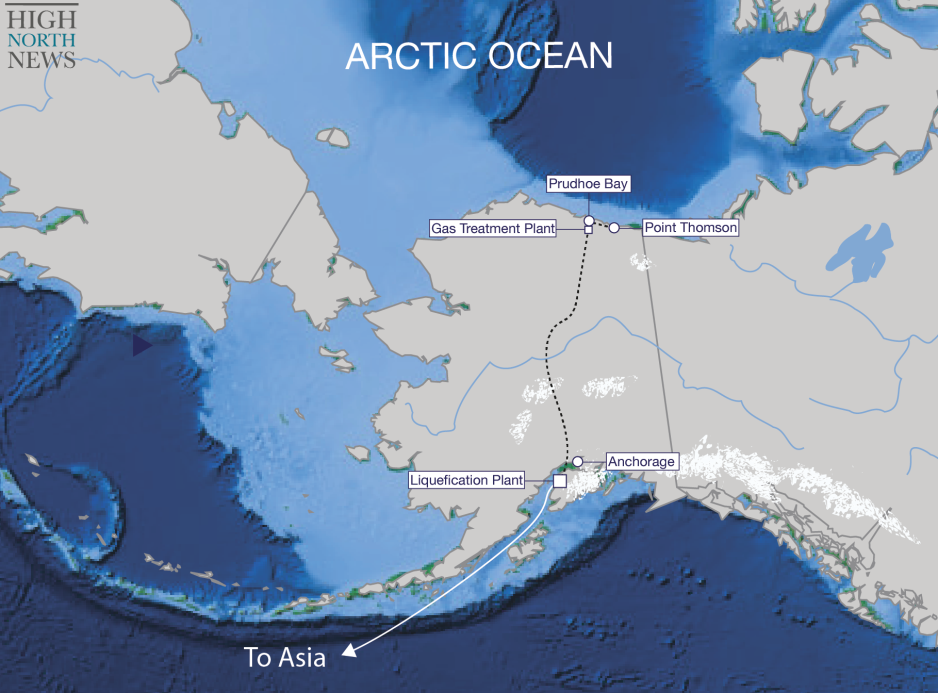Biden Administration Renews Green Light for Alaska LNG Project

Trans-Alaska oil Pipeline passing through Alaska’s northern Brooks Range. (Source: US Geological Survey)
The global liquified natural gas boom continues to make its way into the Arctic. In addition to production at Norway’s Hammerfest LNG and Russia’s Yamal LNG, the US may also produce liquified natural gas in the Arctic before the end of the decade. A critical export license for the planned Alaska LNG project was reauthorized last week.
As part of an ongoing global push to produce and export more liquified natural gas (LNG), the US government renewed its approval of the proposed Alaska LNG facility.
The project, overseen by the Alaska Gasline Development Corporation, pitches the construction of a 1,300km pipeline from Alaska’s North Slope to deliver natural gas to a future liquefaction terminal on the Kenai peninsula.
There the natural gas would be turned into liquefied natural gas before exporting it to customers, primarily in Asia, via LNG tankers. The approval by the Biden administration relates to the issue of exporting LNG to countries the US does not have free trade agreements with. This would apply to most countries in Asia.
Unlike LNG produced in Russia’s Arctic, which has to travel thousands of kilometers on ice-capable tankers along the frozen waters of the Northern Sea Route, Alaska LNG would not encounter any ice-infested waters. Nonetheless, the economics of the project remain uncertain and no investment decision has yet been made.

Map showing approximate route of Alaska LNG pipeline from North Slope to Kenai Peninsula. (Source: Author’s own work)
Is Alaska LNG too costly
A 2016 feasibility study by American consulting firm Wood MacKenzie questioned the cost structure of the project calling it one of the least competitive LNG projects in the world at the time. The analysis resulted in three energy majors, BP, ConocoPhillips, and ExxonMobil, exiting from the project.
More recently updated analyses state that the project could now be competitive compared to US LNG facilities in the Gulf of Mexico, with Alaska’s relative proximity to Asia being a primary factor.
Significant amount of equity and debt financing would be required to bring the project to fruition. According to 2020 estimates the project would cost $38.7bn, a figure which has likely increased substantially since as a result of inflation, especially in the materials and construction sectors.
In comparison, Russia’s two LNG facilities in the Arctic, Yamal LNG and Arctic LNG 2, came with a price tag of $27bn and $21bn respectively. Both projects received significant financing from the Russian government and Chinese state investment funds.
Alaska LNG could miss the boat
Environmentalists lament that this is the second oil and gas project pushed along by the Biden administration in as many months. It cleared the way for the Willow project in Alaska’s National Petroleum Reserve in March. Activists warn that the global need for climate action does not leave room to extract vast additional quantities of hydrocarbon fuels.
Jeff Ordower, North American Director of 350.org, a global grassroots organization addressing climate change, highlighted that LNG, though it may sound like a cleaner alternative to other hydrocarbon fuels, was unsuitable to transition to a cleaner energy future.
“Make no mistake: though proponents may try to confuse us by calling it ‘natural gas,’ LNG is a fossil fuel, NOT a solution. This plan is yet another “carbon bomb” that will disproportionately harm frontline and Indigenous Alaskan communities and will exacerbate the effects of climate change across the country and world,” he explained.
Economists also question if Alaska LNG would also come online in time to profit from the current boom in LNG demand. By the time the facility would open in 2030 at the earliest, demand for what is often described as a “bridge fuel” to a cleaner energy mix, could have peaked.



